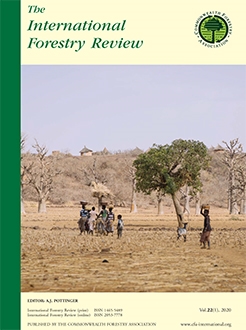The meeting of multiple governmentalities and technologies of participation in protected areas: The case of the Amarakaeri Communal Reserve (Peruvian Amazon)
Abstract
This article analyzes the meeting of different forms of governmentality in the Amarakaeri Communal Reserve (RCA), a protected natural area in the Peruvian Amazon. The variety of practices governing the RCA and the indigenous and non-indigenous populations in its buffer zone, responds to the intersection of socio-historical processes of extraction and conservation. These processes are marked by years of struggle by the indigenous movement to recapture the governance of their territories, resulting in the co-management of the RCA through a negotiated eco-governmentality between the Peruvian state and ECA-Amarakaeri, an indigenous organization. However, while this co-management arrangement permits participatory governance by historically excluded actors such as indigenous peoples, it excludes another population: Andean migrants. This type of governance challenges the role of multi-stakeholder forums related to protected areas and poses questions about the technologies of participation necessary for an equal interaction between the different interests in the governance of protected area.

